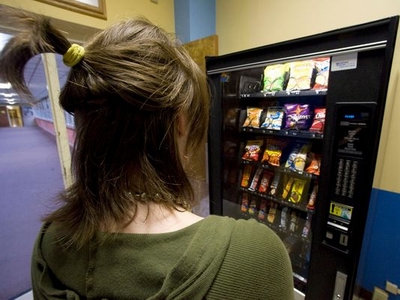
There's been a big shift in how many school districts take money from soda companies and ban junk food from vending machines, health officials say.
A government survey found 44% of school districts banned junk food from vending machines last year, up from 30% in 2006.
It also found drops in how many districts took a cut of soft drink sales, received donations from soda companies, or allowed soda company advertising.
Those are considered positive steps in helping the nation reduce the number of children who are overweight and obese.
But it's not clear to how much impact the changes are having. The overall proportion of U.S. children who are overweight or obese has been holding steady at around 17%, according to government statistics.
Experts say that diet and exercise at home are at least as important as what kids are exposed to in school.
"There are lots and lots of factors that go into obesity rates," said Nancy Brener, lead author of the government report on the study. She is a health scientist at the Centers for Disease Control and Prevention.
The findings come from a detailed government survey last year of more than 800 U.S. school districts. The CDC does the study every six years.
The CDC released the latest findings Monday. It found:
-- The percentage of school districts that received a percentage of soft drink sales receipts fell from 82% in 2006 to 69% in 2012.
-- The proportion that allowed soda companies to advertise soft drinks on school grounds — through posters, scoreboard placards or other ways — dropped from 47% to about 34%.
-- The amount that received cash awards, equipment donations or other incentives from soda companies fell from 52% to 34%.
-- The percentage that required physical education class in elementary schools stayed flat, at about 94%.
That's pretty high, so it's not surprising there wasn't much change there, Brener said.
She noted that the study measured school district policies, which is different than asking what was actually going on at individual schools. Sometimes there's a difference, but CDC doesn't have information on how often that happens.





